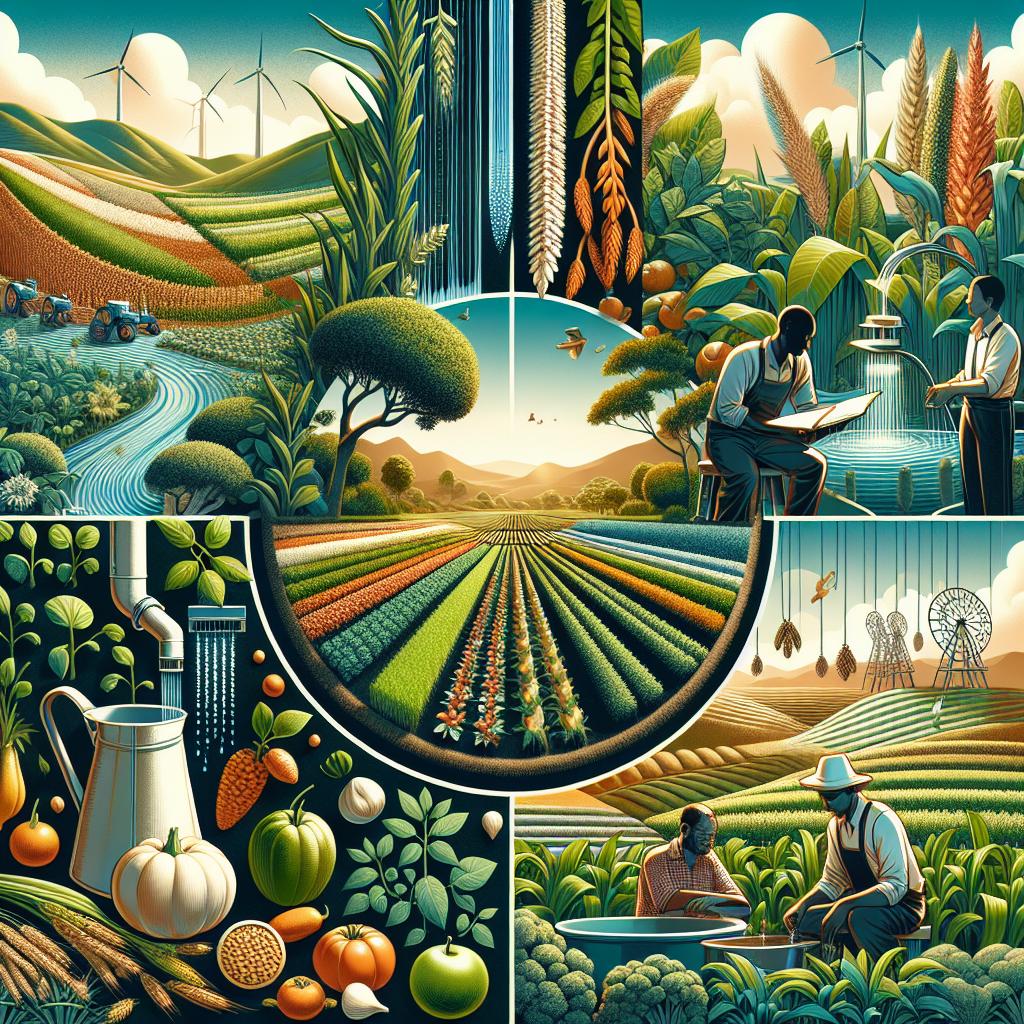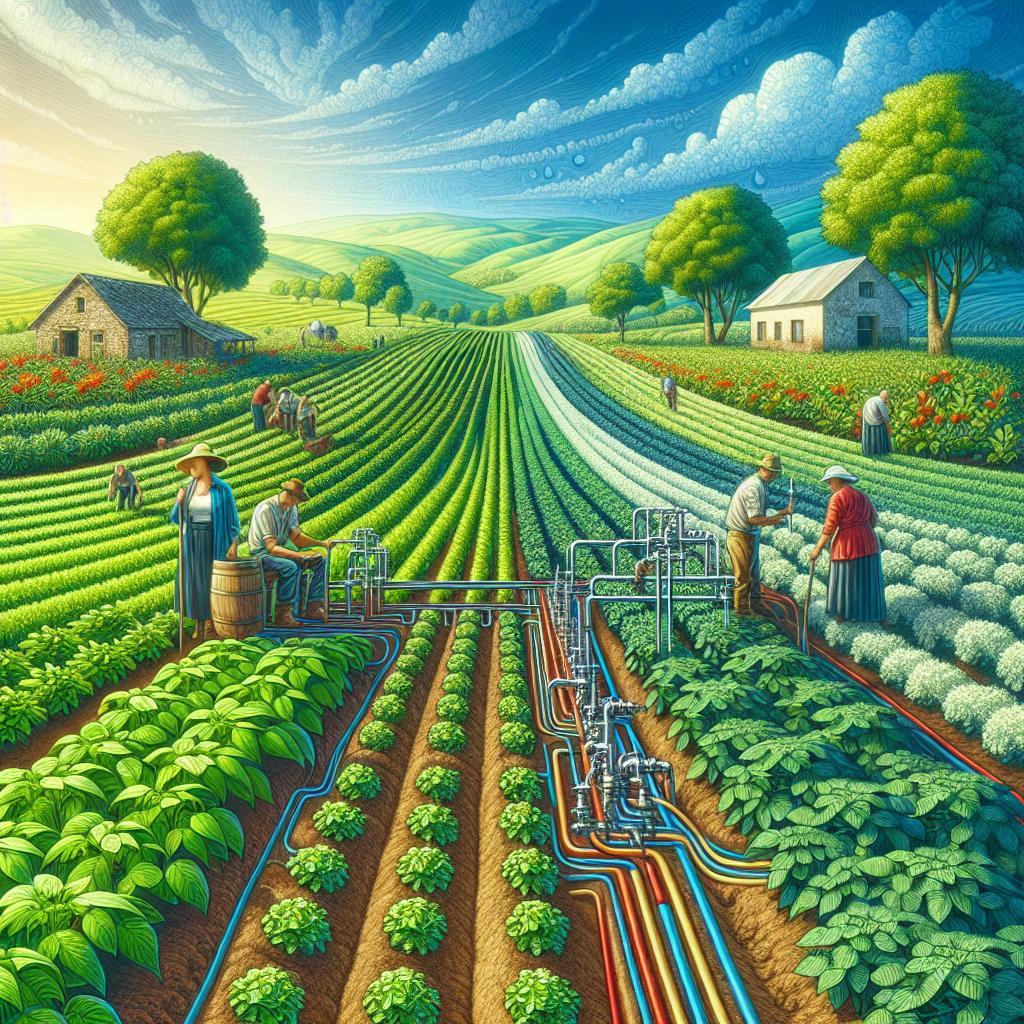This post may contain affiliate links which means I may receive a commission for purchases made through links. Learn more on my Private Policy page.
In a world where every drop of water counts, small-scale farmers are uncovering a savvy solution that not only conserves this precious resource but also transforms the way they cultivate their crops. Enter micro-irrigation—a game-changer that’s sprouting up in fields and gardens across the globe. Imagine a system that delivers just the right amount of moisture directly to the roots of yoru plants, reducing waste and boosting yields while nurturing the environment. Whether you’re a seasoned gardener or just dipping your toes into the world of agriculture, the benefits of micro-irrigation are as refreshing as a spring rain. Join us as we delve into how this innovative approach can revolutionize small-scale farming, making it not only more productive but also more lasting and rewarding. Let’s explore the myriad advantages waiting for you under the gentle hum of this efficient irrigation system!
Maximizing efficiency: How Micro-Irrigation Saves water and Boosts Crop Yields
Micro-irrigation systems, like drip and sprinkler irrigation, provide precise water delivery directly to the plant roots, reducing evaporation and runoff. This targeted approach not only conserves water but also ensures that each plant receives the optimal amount it needs to thrive. Consequently, crops display improved health and resilience, leading to higher yields. The benefits include:
- Water savings: Up to 50% reduction in water usage compared to traditional methods.
- Enhanced nutrient uptake: Roots are more efficient at absorbing moisture and fertilizers.
- Weed suppression: Less water in between rows discourages weed growth.
Additionally,micro-irrigation systems can be tailored to fit various crops and soil types,adding a layer of versatility for small-scale farmers. By adopting these systems, farmers can strategically plan irrigation schedules based on weather patterns, leading to even greater efficiency. A simple comparison illustrates the impact:
| Traditional Irrigation | Micro-Irrigation |
|---|---|
| Excess water loss through evaporation | Minimal evaporation losses |
| Inefficient nutrient distribution | Direct delivery to plant roots |
| Labor-intensive setups | Automated scheduling options |

Nurturing Your soil: The Ecological Advantages of Micro-Irrigation Techniques
Micro-irrigation techniques play a vital role in enhancing soil health, fostering a thriving ecosystem that benefits both farmers and the environment. by delivering water directly to the plant roots, these methods substantially reduce water runoff and evaporation, ensuring that moisture penetrates deeper into the soil profile. This precision not only helps to maintain optimal soil moisture levels but also promotes better nutrient uptake, leading to healthier plants. The increased soil moisture retention encourages beneficial microbial activity, creating a rich environment for a wide range of organisms that contribute to soil fertility.
Moreover, micro-irrigation helps to prevent waterlogging and salinization, common issues faced in traditional irrigation methods. This sustained practice supports several ecological advantages, such as:
- Reduced Soil Erosion: Water is applied directly to the root zones, which minimizes surface runoff.
- Biodiversity Promotion: Healthier soils support diverse plant and animal life.
- Carbon Sequestration: Well-nurtured soils absorb more carbon dioxide, aiding in the fight against climate change.
By investing in micro-irrigation, small-scale farmers can nurture their soil and cultivate a sustainable farming practice that prioritizes ecological health alongside productivity.

Empowering Farmers: Affordable Solutions for Small-Scale Irrigation Systems
Micro-irrigation systems, such as drip and sprinkler setups, offer small-scale farmers a transformative approach to managing water resources efficiently. By delivering water directly to the plant roots, these systems minimize evaporation and runoff, ensuring that every drop counts. The benefits include:
- Water Efficiency: Conserves water by using up to 50% less than traditional irrigation methods.
- Increased Crop Yields: Provides consistent moisture levels,leading to healthier plants and improved produce quality.
- Labor Saving: Requires less manual labor for watering, allowing farmers to focus on other essential farm activities.
Moreover, the affordability of micro-irrigation systems makes them accessible to farmers wiht limited financial resources.With various components available at low costs, farmers can customize their systems according to their specific crop needs. Check out this simple cost comparison table highlighting basic components of a micro-irrigation system:
| Component | Average Cost ($) | Benefits |
|---|---|---|
| Drip Tape | 25 | Efficient water delivery directly to the roots. |
| Pressure Regulator | 15 | Ensures optimal water pressure for uniform distribution. |
| Filters | 10 | prevents clogging and ensures system longevity. |
Sustainable Success: Long-Term Benefits of Adopting micro-Irrigation Practices
Transitioning to micro-irrigation practices offers an array of long-term advantages that enhance the sustainability of small-scale farming. By delivering water directly to the root zones of crops, micro-irrigation minimizes water wastage and significantly increases efficiency. This method not only conserves precious water resources but also promotes healthier plants, resulting in higher yields and better quality produce. Farmers can witness the following benefits:
- Water Conservation: Reduces water usage by up to 50% compared to traditional irrigation methods.
- Cost-Effective: Lowers water bills and reduces the energy costs associated with pumping water.
- Minimal Soil Erosion: Protects soil structure and fertility, ensuring long-term productivity.
Moreover, embracing micro-irrigation fosters resilience against climate change impacts and erratic weather patterns. With an efficient water supply,crops can withstand dry periods better,thus ensuring steady food production and income for farmers. Additionally, adopting this sustainable practice can open doors to grants and certifications for organic farming, as agricultural practices increasingly trend towards environmental stewardship. Consider these compelling advantages:
| Benefit | Impact |
|---|---|
| Resource Efficiency | Reduces groundwater depletion. |
| Improved Crop health | Higher resistance to pests and diseases. |
| Economic Savings | Lower overall farming costs; increased profitability. |
Concluding Remarks
As we wrap up our exploration of the benefits of micro-irrigation for small-scale farming, it’s clear that this innovative technique is more than just a watering method—it’s a game-changer for farmers striving for sustainability, efficiency, and yield. By embracing micro-irrigation, you’re not just nurturing your crops; you’re cultivating a healthier ecosystem, preserving precious resources, and fostering a vibrant community of resilient growers.
Imagine walking through your flourishing fields, knowing that each drop of water is working hard to support your dreams while respecting the environment. It’s a journey of growth that starts with a simple choice—one that can have a lasting impact on your farm and our planet.
So, whether you’re a seasoned farmer or just starting your agricultural adventure, micro-irrigation offers a pleasant hand to help you achieve your goals. Let’s harness the power of precision and promote the bounty of our lands together. Here’s to healthier crops, thriving farms, and a brighter, more sustainable future for all! Happy farming!
This post may contain affiliate links which means I may receive a commission for purchases made through links. Learn more on my Private Policy page.

